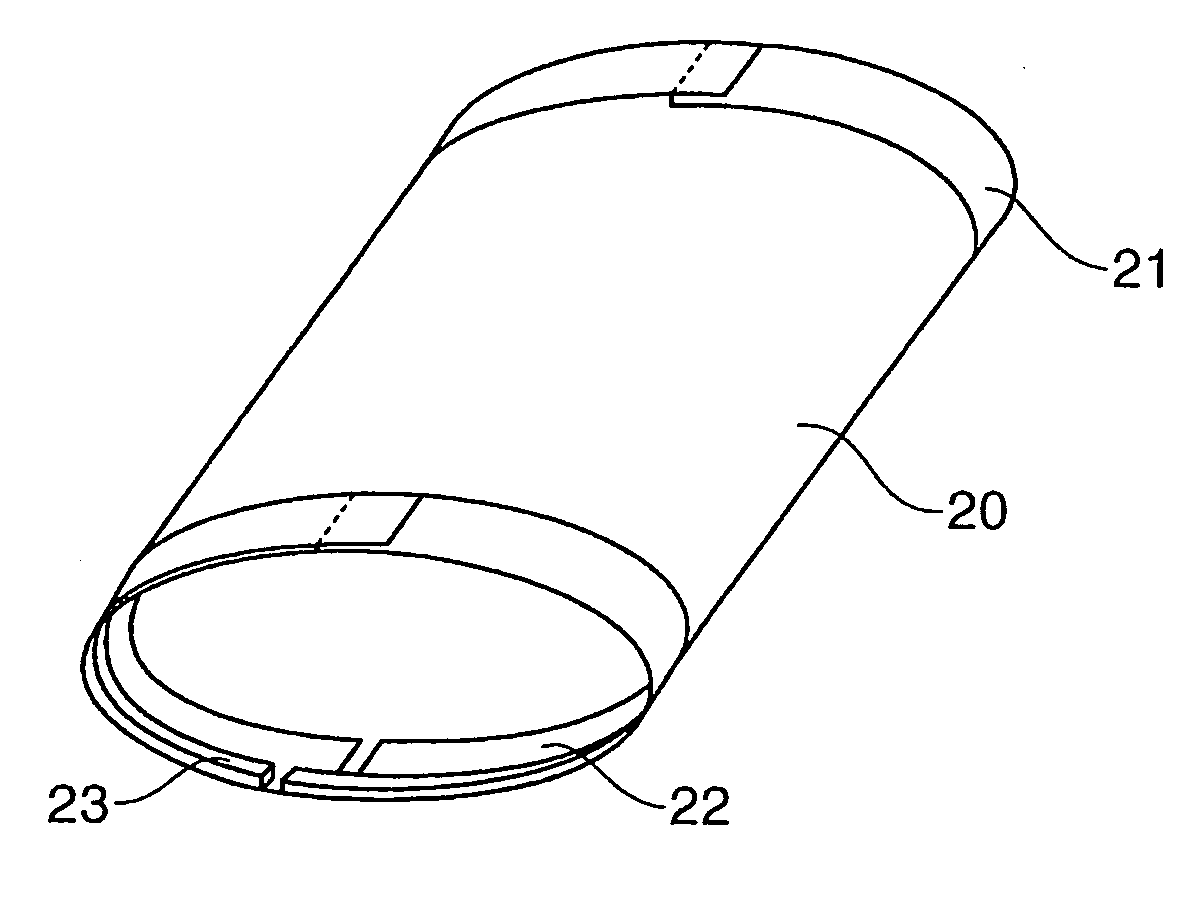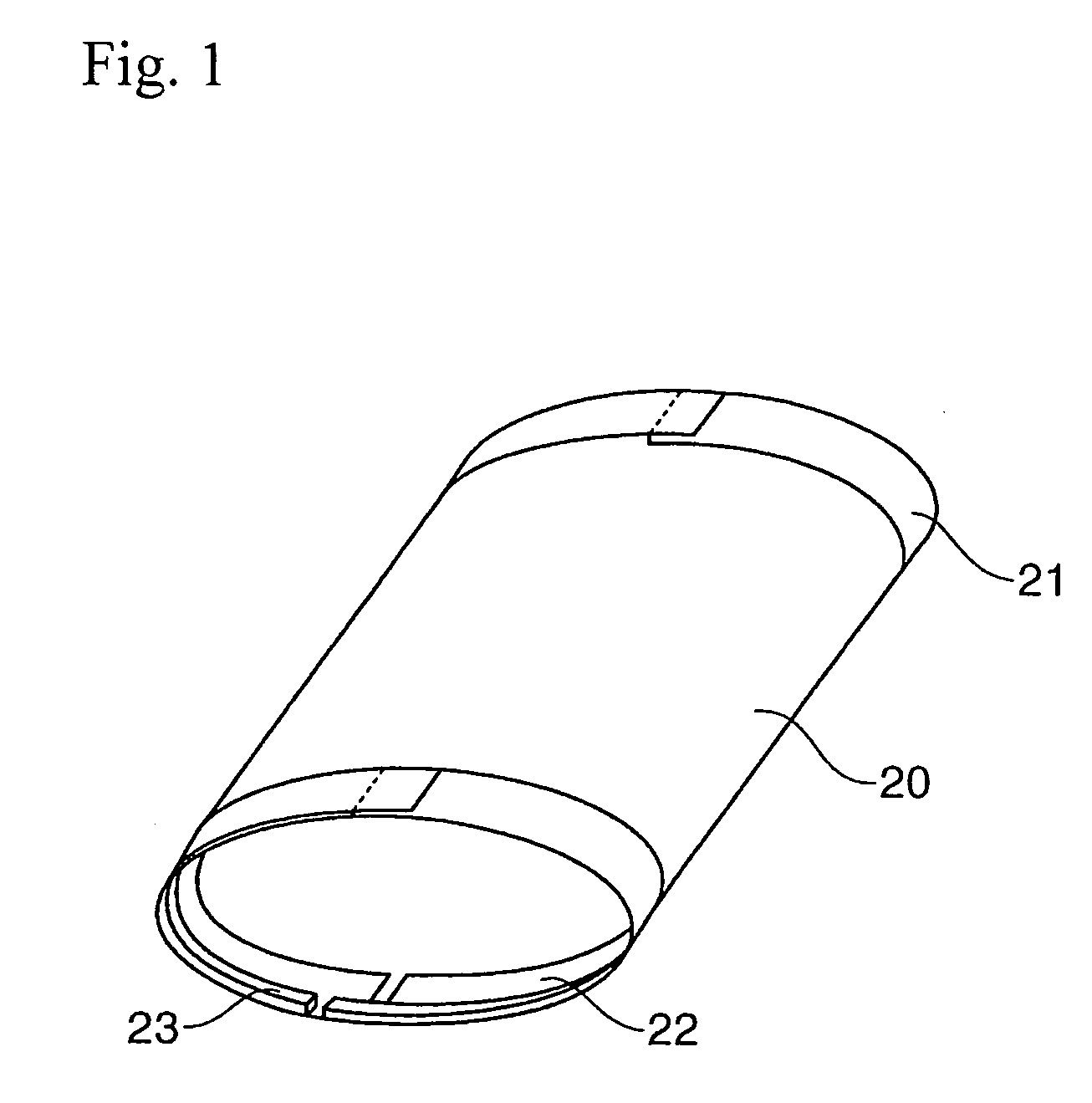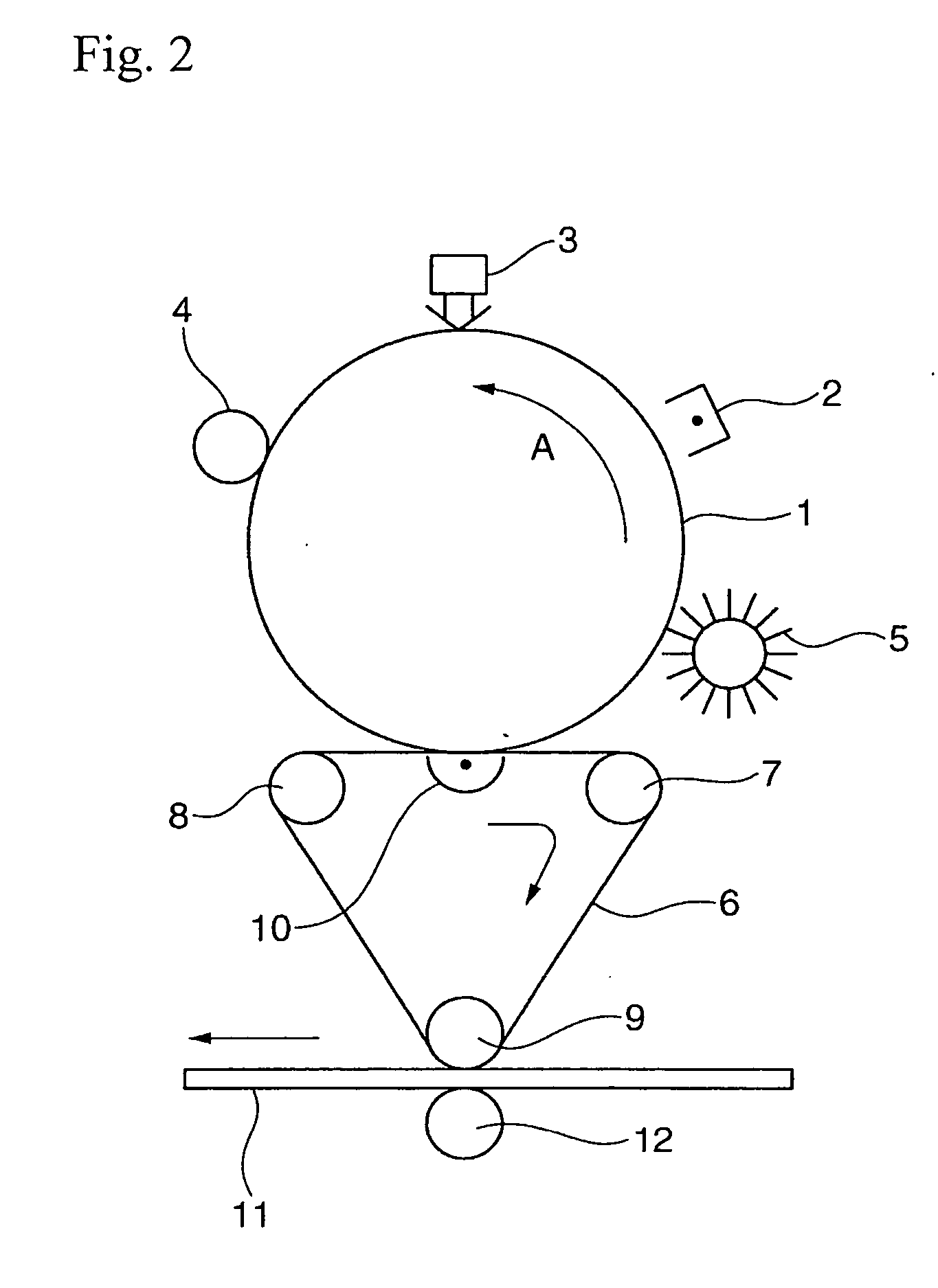Endless belt for image-forming apparatuses, and image-forming apparatus
a technology of image-forming apparatus and end-less belt, which is applied in the field of end-less belt for image-forming apparatus and image-forming apparatus, can solve the problems of severe competition between image-forming apparatuses of electrophotographic type systems, resin materials simply blended with conductive agents, and resin materials tend to be deteriorated in flexing resistance, so as to improve flexing resistance, dimensional stability, and electrical resistivity and external environment stability. , the effect of high durability
- Summary
- Abstract
- Description
- Claims
- Application Information
AI Technical Summary
Benefits of technology
Problems solved by technology
Method used
Image
Examples
examples
[0225] The present invention is described in more detail by Examples, but the Examples are only illustrative and not intended to limit the scope of the present invention. Meanwhile, the raw materials, heat-kneading methods and methods for evaluating properties of the endless belt as used in Examples and Comparative Examples are as follows.
[0226] The following raw materials were used. Meanwhile, in Tables, “PEER” represents a polyester polyester copolymer elastomer, and “PBT” represents polybutylene terephthalate. In the column “Composition” described in Tables, a total amount of the thermoplastic elastomer and the thermoplastic resin was 100 parts by weight.
(1) PBT 1: “NOVADURAN 5040ZS (tradename)” produced by Mitsubishi Engineering-Plastics Corporation (hereinafter referred to merely as “5040ZS”):
[0227] Weight-average molecular weight: 40,000
[0228] Weight-average molecular weight calculated as PS: 122,000
[0229] MFR (240° C., load: 2.16 kgf): 4 g / 10 min
(2) PBT 2: “NOVADURAN ...
examples 1 to 8
, Comparative Examples 1 to 4 and Reference Example 1
[0276] These examples, comparative examples and reference example were performed for explaining the first, second and fourth aspects of the present invention.
examples 1 to 4
[0277] The respective components were heat-kneaded with each other at the mixing ratio as shown in Table 1, thereby obtaining a molding material in the form of pellets. The heat-kneading conditions are also shown in Table 1. Specifically, the reaction in the kneader was suppressed by controlling the resin temperature and residence time in the kneader, and at the same time, the kneading conditions were controlled such that the electric resistivity of the composition was fallen within a semiconductor region. The thus obtained molding material in the form of pellets were extrusion-molded to produce an endless belt. Meanwhile, in the column “Composition *” in Table 1, the amounts of carbon black, chelator and thickening agent are respectively represented by weight part(s) based on 100 parts by weight of a total amount of the thermoplastic elastomer and the thermoplastic resin.
[0278] Any of the endless belts obtained in Examples 1 to 4 exhibited an average surface resistivity value SR(1...
PUM
| Property | Measurement | Unit |
|---|---|---|
| melt flow rate | aaaaa | aaaaa |
| volume resistivity | aaaaa | aaaaa |
| melting point | aaaaa | aaaaa |
Abstract
Description
Claims
Application Information
 Login to View More
Login to View More - R&D
- Intellectual Property
- Life Sciences
- Materials
- Tech Scout
- Unparalleled Data Quality
- Higher Quality Content
- 60% Fewer Hallucinations
Browse by: Latest US Patents, China's latest patents, Technical Efficacy Thesaurus, Application Domain, Technology Topic, Popular Technical Reports.
© 2025 PatSnap. All rights reserved.Legal|Privacy policy|Modern Slavery Act Transparency Statement|Sitemap|About US| Contact US: help@patsnap.com



